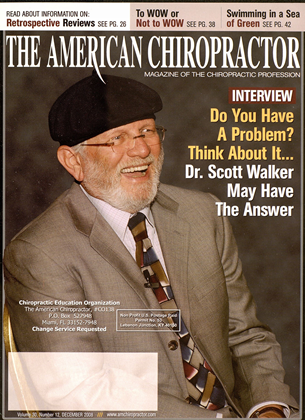USE: To increase understanding of traumatic effects on the cervical spine of patients that have undergone single and double level fusion TITLE: Biomechanics of the Anterior Longitudinal Ligament During 8 g Whiplash Simulation Following Single and Contiguous Two-Level Fusion CITATION: SPINE Volume 33, Number 6, pp 607-611 ©2008 AUTHORS: Alan B. C. Dang, MD, Serena S. Hu, MD, and Bobby K.-B. Tay, MD When a clinician is evaluating a traumatically injured victim there arc many factors to consider when determining prognosis and diagnosis. The most important arc changes in the structure and function of the cervical spine including surgical interventions, specifically fusions. When determining causality in relation to a cervical spine injury in patients with prior surgical fusion, a very recent article published in Spine by Dang et al 2008 may shed some light on this complex scenario. Recognized internationally as the leading journal in its field. Spine is an international, peer-reviewed, bi-weekly periodical that considers for publication original articles in the field of spine care. It is the leading subspccialty journal for the treatment of spinal disorders. Only original papers are considered for publication with the understanding that they are contributed solely to Spine. The Journal does not publish articles reporting material that has been reported at length elsewhere. This study specifically addressed how cervical fusion alters the peak strain of the Anterior Longitudinal Ligament (ALL) in the adjacent motor segments. Past hypotheses have pointed out that due to decrease in flexibility in the cervical spine, the segments above and below the fused area are more susceptible to injury. The study used cadaveric specimens because "anthropomorphic dummies lack accurate soft tissue representation. Only cadaveric specimens or mathematical models are appropriate to evaluate the ALL." pp 607. The ALL strain was tested at 8g whiplash. This study quantified the increase in peak ALL strain during Kg acceleration simulated whiplash in a single-level and 2-levcl fusion in a healthy spine. "The increase in peak ALL strain in the adjacent motion segments is greater with 2-level fusion than it is with single-level fusion (40.8% vs. 15.5%)" pp610. In conclusion, this study demonstrates "Two-level fusion produced greater increases in peak ligament strain when compared with single level fusion at the adjacent motion segments." pp 610 Injury to the ligaments surrounding the cervical spine result in permanent injury with long term consequences. When diagnosing traumatically injured patients with a past medical history of surgical fusion, look to the areas adjacent to the fused segments for answers to chronic pain and muscle spasm. Each issue, a clinical topic will be provided hv Dr. William J. Owens of the American Acad-emv of Medical Legal Professionals (AAMLP), which is a national non-profit organization comprised of doctors and lawyers. The purpose of the organization is to provide its members with current research in trauma and spinal-related topics to keep the professional on the cutting edge of healthcare. Members may also sit for a Diplomale examination and be conferred a DA A MLR The organization also offers support to the individual member's practice. To learn more, go to www.aamlp.org or call 1-716-228-3847. The above review is provided for educational purposes only. It is not designed or intended to reproduce or replace the authors work. Readers are encouraged to obtain full licensed versions of the article as determined hv Copyright Law. For information on how to obtain a licensed copy please contact the Academy directlv. 2008. SEND US YOUR COMMENTS E-mail: Please include your name address and phone number. Letters to our editor can be sent to editorial^ amchiropractor.com. Letter may be edited for clarity or space. TACon the internet: Check out our website for this and previous issues at www.TheAmericanChiropractor.com
 View Full Issue
View Full Issue












